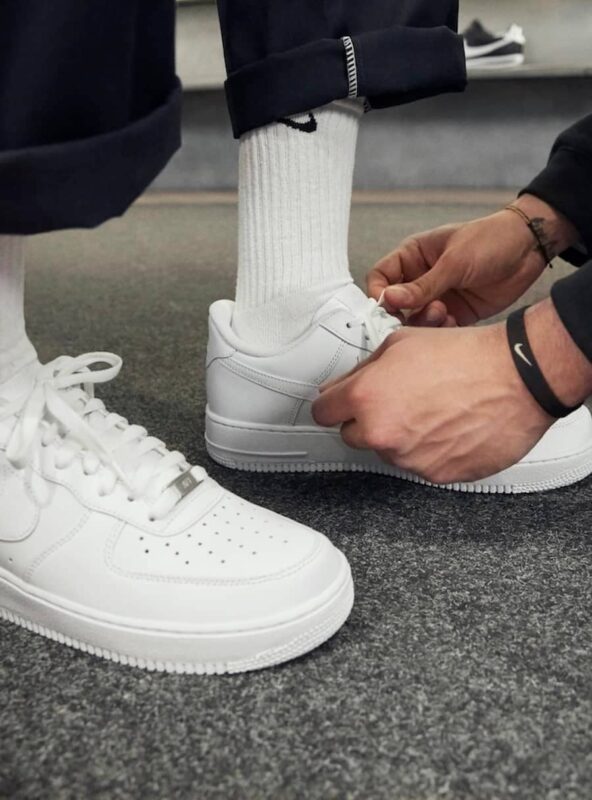News
Step Up Your Shoe Game with These 7 Tips for Choosing the Perfect Pair for Your Feet
Wearing good shoes is essential to not only keep your feet healthy but also maintain your overall well-being. Shoes provide the foundation for your body and can have a significant impact on your posture, balance, and even prevent injuries. Hence, it is crucial to choose the right shoes that are comfortable, supportive, and appropriate for your foot type and activity level.
Kelsey Gaston, a licensed physical therapist at the University Health Center, shares some useful advice on how to find a proper shoe to ensure optimal foot health.
Choose a shoe with a firm foundation
Your shoes are like the foundation of a house. If the foundation is not sturdy and solid, the house will become wobbly and off-kilter. Similarly, if your shoes have a squishy base, it can cause instability in your body and increase the risk of injury. Therefore, when choosing shoes, ensure that they have a firm foundation. You can test the firmness of a shoe’s foundation by gently bending it at the toe. If it bends in half, it is too soft, but if it bends somewhat and remains mostly rigid, it has good support.
Make sure it has arch support
Shoes with flat soles like Vans, Chucks, and other trendy shoes may look stylish, but they can cause pain over time. Shoes with arches provide support across the bottom of your foot, giving you greater balance and stability. It is best to choose shoes with built-in arch support rather than adding an insert. If you must buy an insert, avoid purchasing one off the shelf from a big-box store. Instead, visit a specialty store like the Lincoln Running Company, where they can fit your foot for the proper insole.
Go for laces
Lace-up shoes are generally preferred over slip-ons because they provide better support and hold your foot in place to the sole of the shoe. Sandals like Birkenstocks may have an arch, but they won’t protect your feet as well as tennis shoes or running shoes.
Buy shoes that fit your foot type and comfort level
Choosing the right shoes is not just about picking a particular style or color. The shoe you select should be comfortable and appropriate for your foot type and activity level. Start by having your foot measured by a professional at a shoe store to determine the size and width you need. Get remeasured at least once every few years because your foot size and shape can change over time. Next, try on different brands and styles to find one that feels most comfortable to you. Don’t let brand loyalty keep you from exploring your options.
As a guideline, avoid shoes that have a narrow toe box and don’t provide at least a finger-width gap between your big toe and the shoe’s edge. Remember to stand up and walk around in the shoes to see what they feel like when your foot lies flat.
Replace old, worn shoes
It is important to know when it’s time to replace your old, worn-out shoes. Worn-out shoes can cause foot problems and even lead to injuries. So, upgrade your shoes when the texture on the bottom of your shoes starts to wear around the heels or balls of your feet. When you toss your old shoes, use this as an opportunity to try on new brands and styles. In some cases, your tried-and-true favorite is still the right shoe for you, or you might find a new favorite. Keep an open mind.
Be intentional about high heels
Wearing high heels can be a fashion statement, but it’s important to consider the impact they can have on your body. High heels can cause various health issues, including ankle sprains, foot pain, and muscle strain in your legs and back. Moreover, prolonged wearing of high heels can lead to changes in your posture and walking style, which can cause long-term problems for your spine and joints.
When possible, it’s always best to choose comfortable and supportive footwear that allows your feet to move naturally. For example, wearing flats, sneakers, or other comfortable shoes can help prevent discomfort and reduce the risk of injury. However, if you still prefer wearing high heels, you can take several steps to minimize the risk of health problems.
One strategy is to wear high heels for shorter periods and switch to flats or other comfortable shoes when you can. For example, if you’re attending a formal event, consider wearing comfortable shoes during the day and changing into your heels once you arrive. Alternatively, if you need to walk a long distance, wear comfortable shoes and change into your high heels once you reach your destination.
Another strategy is to choose high heels with lower heels or platforms, as these can provide more stability and support for your feet. Additionally, choosing shoes with wider heels can also help distribute your weight more evenly and reduce the pressure on your feet.
Get help when you have pain
Lastly, if you experience pain or discomfort while wearing any type of shoes, it’s important to seek professional advice from a physical therapist or healthcare provider. They can help diagnose the underlying problem and recommend the appropriate treatment or exercises to help alleviate your symptoms.
In summary, while high heels can be fashionable, they can also have negative effects on your health. To minimize the risks, try to wear comfortable and supportive footwear whenever possible, and take steps to reduce the impact of high heels on your body. Remember, your feet are the foundation of your body, and taking care of them can help you maintain good health and mobility for years to come.

